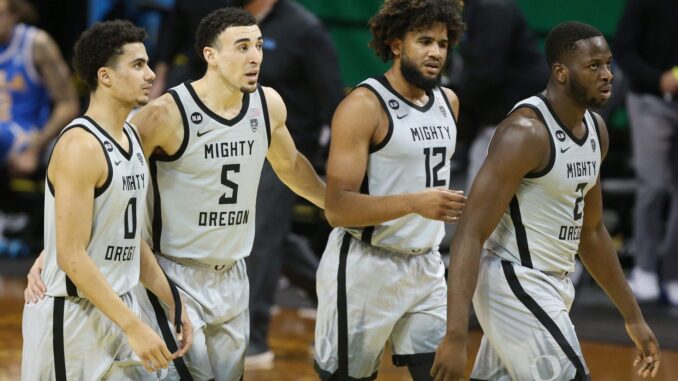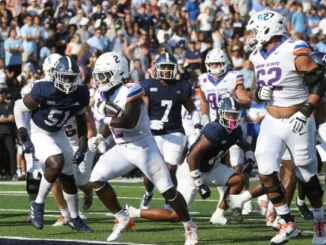
Is this the golden age of the Oregon Ducks? Are they in charge of the PAC-12 conference, at least when it comes to the so-called revenue sports of college football and men’s basketball? Can we add women’s basketball since they do so well there, not to mention in a variety of non-revenue sports?
We might as well call it that. Though the PAC-12 can’t seem to compete on a national level in football or basketball, Oregon specifically seems to have its way with the rest of the schools in the conference and there is little to suggest that it won’t happen again this spring as basketball post-season gets underway.
The Ducks’ men’s team is currently in first place in the conference with a slight lead over USC. As for the other schools in the Pacific Northwest? Both Washington schools are in the cellar both conference wise and nationally. They could get lucky and make some noise in the conference tournament, which begins on March 10th and runs through the 13th at T-Mobile Arena in Las Vegas. Neither school will make the men’s March Madness tournament a week later. Oregon State is doing better and is a middle-of-the-conference team, but should expect their season to last much longer than a customary appearance in the conference tournament.
The only schools who will likely be invited to the NCAA Men’s Tournament are Oregon, UCLA, USC and Colorado, with Stanford as a possible play-in team, depending on how things play out from now until the end of the PAC-12 Tournament next weekend.
In the PAC-12 football championship game in December, Oregon nudged USC for the win. Oregon and USC are the only two teams who can reliably be counted on to edge themselves at least close to the national conversation.
Why is the PAC-12 down in football and basketball as of late?
It’s a complicated question without any easy answers. One could argue that the West Coast in general does not have the same high level of high school and college sports competition, not like the Midwest and the South, where most of the best teams come from. Is it because the western states are generally larger, their populations more spread out? Perhaps, though California is the most populous state, so that theory doesn’t entirely explain it. Is it the time zone difference, that West Coast games often start so late in the day that national audiences don’t get to see them firsthand? Do the top recruits choose not to go to schools in the PAC-12 because they are aware of these things?
Again, it’s too difficult to answer with any certainty, but some of these factors likely contribute to PAC-12 schools not performing as well nationally.
Which brings us back to Oregon. How are they so good consistently? Why are they able to compete at the top levels of the conference across multiple sports? It’s of course the hard work of the coaches and the athletic department in general, who have established a culture of winning that transcends specific sports and appeals to high school athletes who see Eugene as a place where they can come in and win and be alongside other winners.
Whatever their secret is, they should consider sharing best practices with their rivals, such as Washington, Washington State and Oregon State. They could all get better and make the PAC-12 a place where everyone would want to play.




